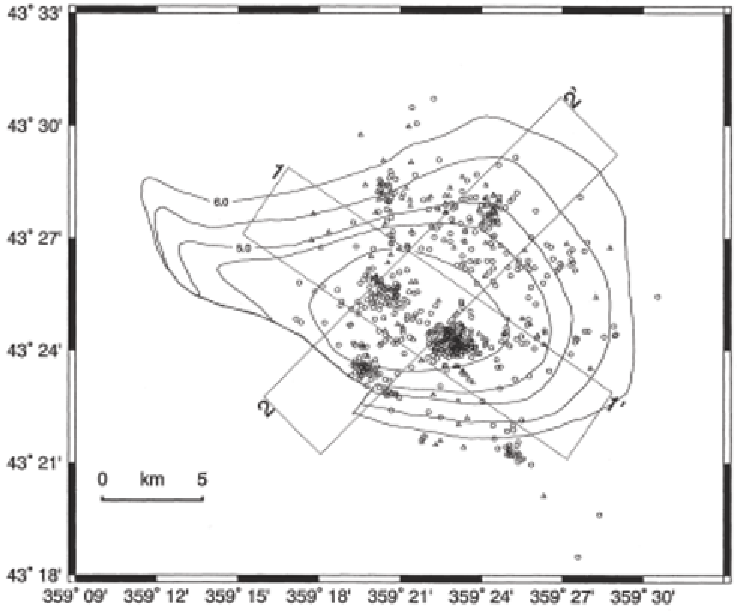Geoscience Reference
In-Depth Information
BOX 2.5
Induced Seismicity at the Lacq Gas Field (France)
The Lacq gas field in southwestern France offers one of the best-documented cases of seismicity induced by
extraction of pore fluids (Grasso and Wittlinger, 1990; Segall et
al., 1994). The gas reservoir is a 500-m-thick
(~1,640-feet-thick) sequence of limestone that forms a dome-shaped structure at depths of 3.2 to 5.5 km (~2.0 to
3.4 miles) (Figure 1). The reservoir was highly overpressured when production started in 1957, with a pressure
of about 66 MPa (660 bars) at a depth of 3.7 km (~2.3 miles) below sea level. The first felt earthquake took
place in 1969, at a time when the pore pressure had decreased by about 30 MPa (300 bars). By 1983, the
pressure had dropped by 500 bars, and 800 seismic events with magnitude up to
M
4.2 had been recorded
Figure 1
Location of seismic events compared to the size of the gas field (contours indicate depth to the top
of the gas reservoir). Locations were determined from a local network and were based on an assumed velocity
model. Triangles on the map are epicenters for events between 1976 and 1979; circles represent epicenters for
events from 1982 to 1992. The rectangular areas (1-1' and 2-2') refer to other parts of the analysis conducted
by Segall et al. (1994) and are not discussed further. SOURCE: After Segall et al. (1994).



Search WWH ::

Custom Search